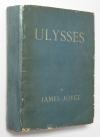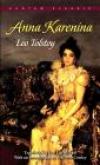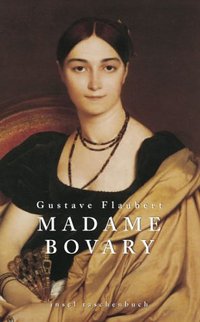Author Photo And Bio
 1. The Odyssey by Homer (ninth century b.c.e.?). Where The Iliad tells of war, The Odyssey is the story of survival and reconciliation following the ten-year battle with Troy. Where Achilles was defined by warrior brutality, Odysseus, King of Ithaca, is defined by his intelligence and wit. This epic poem follows Odysseus on his adventures as he struggles —against the threats of sea monsters and the temptation of the sirens’ song —to be reunited with his son Telemachus, his faithful, clever queen Penelope, and their kingdom.
1. The Odyssey by Homer (ninth century b.c.e.?). Where The Iliad tells of war, The Odyssey is the story of survival and reconciliation following the ten-year battle with Troy. Where Achilles was defined by warrior brutality, Odysseus, King of Ithaca, is defined by his intelligence and wit. This epic poem follows Odysseus on his adventures as he struggles —against the threats of sea monsters and the temptation of the sirens’ song —to be reunited with his son Telemachus, his faithful, clever queen Penelope, and their kingdom.
 2. Hamlet by William Shakespeare (1600). The most famous play ever written, Hamlet tells the story of a melancholic prince charged with avenging the murder of his father at the hands of his uncle, who then married his mother and, becoming King of Denmark, robbed Hamlet of the throne. Told the circumstances of this murder and usurpation by his father’s ghost, Hamlet is plunged deep into brilliant and profound reflection on the problems of existence, which meditations delay his revenge at the cost of innocent lives. When he finally acts decisively, Hamlet takes with him every remaining major character in a crescendo of violence unmatched in Shakespearean theater.
2. Hamlet by William Shakespeare (1600). The most famous play ever written, Hamlet tells the story of a melancholic prince charged with avenging the murder of his father at the hands of his uncle, who then married his mother and, becoming King of Denmark, robbed Hamlet of the throne. Told the circumstances of this murder and usurpation by his father’s ghost, Hamlet is plunged deep into brilliant and profound reflection on the problems of existence, which meditations delay his revenge at the cost of innocent lives. When he finally acts decisively, Hamlet takes with him every remaining major character in a crescendo of violence unmatched in Shakespearean theater.
 3. The Canterbury Tales by Geoffrey Chaucer (1380s?). Not so much a single poem as a gathering of voices ranging from bawdy to pious, this captivating work presents a panoramic view of medieval England. Vivid, direct, and often irresistibly funny, the tales are told by pilgrims making their way to Canterbury to visit the shrine of Saint Thomas Beckett. Each night another member of the party —a knight, a scholar, a miller —tells a story, and tale by tale, a portrait emerges of the diversity and delight of human possibility.
3. The Canterbury Tales by Geoffrey Chaucer (1380s?). Not so much a single poem as a gathering of voices ranging from bawdy to pious, this captivating work presents a panoramic view of medieval England. Vivid, direct, and often irresistibly funny, the tales are told by pilgrims making their way to Canterbury to visit the shrine of Saint Thomas Beckett. Each night another member of the party —a knight, a scholar, a miller —tells a story, and tale by tale, a portrait emerges of the diversity and delight of human possibility.
 4. Ulysses by James Joyce (1922). Filled with convoluted plotting, scrambled syntax, puns, neologisms, and arcane mythological allusions, Ulysses recounts the misadventures of schlubby Dublin advertising salesman Leopold Bloom on a single day, June 16, 1904. As Everyman Bloom and a host of other characters act out, on a banal and quotidian scale, the major episodes of Homer’s Odyssey —including encounters with modern-day sirens and a Cyclops —Joyce’s bawdy mock-epic suggests the improbability, perhaps even the pointlessness, of heroism in the modern age.
4. Ulysses by James Joyce (1922). Filled with convoluted plotting, scrambled syntax, puns, neologisms, and arcane mythological allusions, Ulysses recounts the misadventures of schlubby Dublin advertising salesman Leopold Bloom on a single day, June 16, 1904. As Everyman Bloom and a host of other characters act out, on a banal and quotidian scale, the major episodes of Homer’s Odyssey —including encounters with modern-day sirens and a Cyclops —Joyce’s bawdy mock-epic suggests the improbability, perhaps even the pointlessness, of heroism in the modern age.
 5. Emma by Jane Austen (1816). The story of Miss Woodhouse —busybody, know-it-all, and general relationship enthusiast —is a comedy of manners deftly laced with social criticism. The charm largely inheres in Emma’s imperfections: her slightly spoiled maneuverings, her highly fallible matchmaking, her inability to know her own heart. Emma teeters from lovable one moment to tiresome and self-centered the next. In writing her story, Austen found an ideal venue for her note-perfect, never-equaled archness.
5. Emma by Jane Austen (1816). The story of Miss Woodhouse —busybody, know-it-all, and general relationship enthusiast —is a comedy of manners deftly laced with social criticism. The charm largely inheres in Emma’s imperfections: her slightly spoiled maneuverings, her highly fallible matchmaking, her inability to know her own heart. Emma teeters from lovable one moment to tiresome and self-centered the next. In writing her story, Austen found an ideal venue for her note-perfect, never-equaled archness.
 6. Middlemarch by George Eliot (1871–72). Dorothea Brooke is a pretty young idealist whose desire to improve the world leads her to marry the crusty pedant Casaubon. This mistake takes her down a circuitous and painful path in search of happiness. The novel, which explores society’s brakes on women and deteriorating rural life, is as much a chronicle of the English town of Middlemarch as it is the portrait of a lady. Eliot excels at parsing moments of moral crisis so that we feel a character’s anguish and resolve. Her intelligent sympathy for even the most unlikable people redirects our own moral compass toward charity rather than enmity.
6. Middlemarch by George Eliot (1871–72). Dorothea Brooke is a pretty young idealist whose desire to improve the world leads her to marry the crusty pedant Casaubon. This mistake takes her down a circuitous and painful path in search of happiness. The novel, which explores society’s brakes on women and deteriorating rural life, is as much a chronicle of the English town of Middlemarch as it is the portrait of a lady. Eliot excels at parsing moments of moral crisis so that we feel a character’s anguish and resolve. Her intelligent sympathy for even the most unlikable people redirects our own moral compass toward charity rather than enmity.
 7. Anna Karenina by Leo Tolstoy (1877). Anna’s adulterous love affair with Count Vronsky —which follows an inevitable, devastating road from their dizzyingly erotic first encounter at a ball to Anna’s exile from society and her famous, fearful end —is a masterwork of tragic love. What makes the novel so deeply satisfying, though, is how Tolstoy balances the story of Anna’s passion with a second semiautobiographical story of Levin’s spirituality and domesticity. Levin commits his life to simple human values: his marriage to Kitty, his faith in God, and his farming. Tolstoy enchants us with Anna’s sin, then proceeds to educate us with Levin’s virtue.
7. Anna Karenina by Leo Tolstoy (1877). Anna’s adulterous love affair with Count Vronsky —which follows an inevitable, devastating road from their dizzyingly erotic first encounter at a ball to Anna’s exile from society and her famous, fearful end —is a masterwork of tragic love. What makes the novel so deeply satisfying, though, is how Tolstoy balances the story of Anna’s passion with a second semiautobiographical story of Levin’s spirituality and domesticity. Levin commits his life to simple human values: his marriage to Kitty, his faith in God, and his farming. Tolstoy enchants us with Anna’s sin, then proceeds to educate us with Levin’s virtue.
 8. Tristram Shandy by Laurence Sterne (1759–67). Sterne promises the “life and opinions” of his protagonist. Yet halfway through the fourth volume of nine, we are still in the first day of the hero’s life thanks to marvelous digressions and what the narrator calls “unforeseen stoppages”—detailing the quirky habits of his eccentric family members and their friends. This broken narrative is unified by Sterne’s comic touch, which shimmers in this thoroughly entertaining novel that harks back to Don Quixote and foreshadows Ulysses.
8. Tristram Shandy by Laurence Sterne (1759–67). Sterne promises the “life and opinions” of his protagonist. Yet halfway through the fourth volume of nine, we are still in the first day of the hero’s life thanks to marvelous digressions and what the narrator calls “unforeseen stoppages”—detailing the quirky habits of his eccentric family members and their friends. This broken narrative is unified by Sterne’s comic touch, which shimmers in this thoroughly entertaining novel that harks back to Don Quixote and foreshadows Ulysses.
 9. Madame Bovary by Gustave Flaubert (1857). Of the many nineteenth-century novels about adulteresses, only Madame Bovary features a heroine frankly detested by her author. Flaubert battled for five years to complete his meticulous portrait of extramarital romance in the French provinces, and he complained endlessly in letters about his love-starved main character — so inferior, he felt, to himself. In the end, however, he came to peace with her, famously saying, “Madame Bovary: c’est moi.” A model of gorgeous style and perfect characterization, the novel is a testament to how yearning for a higher life both elevates and destroys us.
9. Madame Bovary by Gustave Flaubert (1857). Of the many nineteenth-century novels about adulteresses, only Madame Bovary features a heroine frankly detested by her author. Flaubert battled for five years to complete his meticulous portrait of extramarital romance in the French provinces, and he complained endlessly in letters about his love-starved main character — so inferior, he felt, to himself. In the end, however, he came to peace with her, famously saying, “Madame Bovary: c’est moi.” A model of gorgeous style and perfect characterization, the novel is a testament to how yearning for a higher life both elevates and destroys us.
 10. Alice’s Adventures in Wonderland by Lewis Carroll (1865). Young Alice follows a worried, hurrying White Rabbit into a topsy-turvy world, where comestibles make you grow and shrink, and flamingoes are used as croquet mallets. There she meets many now-beloved characters, such as the Mad Hatter, the Cheshire Cat, and the Queen of Hearts, in this linguistically playful tale that takes a child’s-eye view of the absurdities of adult manners.
10. Alice’s Adventures in Wonderland by Lewis Carroll (1865). Young Alice follows a worried, hurrying White Rabbit into a topsy-turvy world, where comestibles make you grow and shrink, and flamingoes are used as croquet mallets. There she meets many now-beloved characters, such as the Mad Hatter, the Cheshire Cat, and the Queen of Hearts, in this linguistically playful tale that takes a child’s-eye view of the absurdities of adult manners.